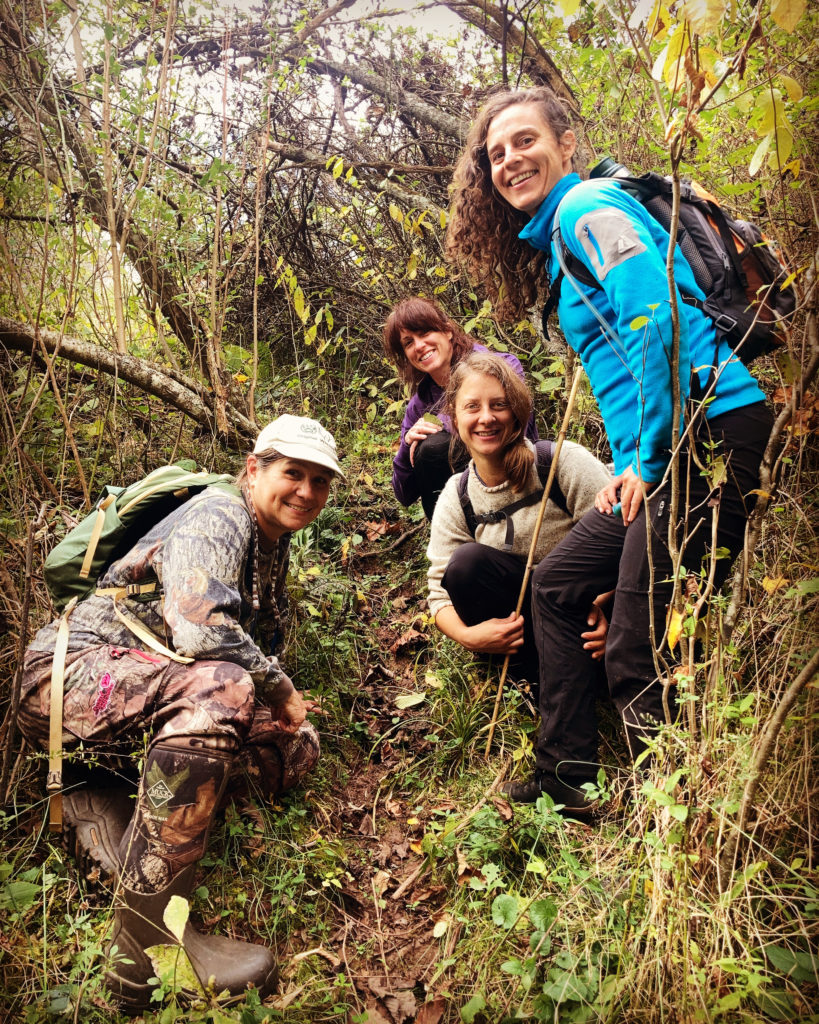Tracker Certification North America recently facilitated three Trailing Evaluations in Ohio, West Virginia, and Wisconsin with Kersey Lawrence. These were firsts in many ways: the first trailing evaluations in each of these states, the first trailing evaluation with all women as participants (in WV), and the first Level 3 Trackers to qualify in Wisconsin. The abundant white-tailed deer were moving in Ohio and West Virginia, leaving tangled webs of trails and plenty of signs related to the rutting season. We got rained on so much in the “hollers” of West Virginia, and it made the crunchy leaves soft, and we got rained on in Ohio as we belly crawled through briar thickets along white-tailed deer trails that snaked through an old apple-tree grove. In Wisconsin we started the first afternoon on fresh elk trails in 3-5 inches of fluffy snow and followed them for 4 hours, interpreting their every move until we found them! The snow, over the next week proceeded to repeatedly thaw and melt, refreeze and melt, more and more each day over the week, creating increasingly difficult, and appropriate, learning and tracking conditions.
Some more highlights of our programs:
In Ohio we saw an eight-point buck stand up out of his bed and slowly trot across our field of view while we froze in place. He positioned himself behind a small tree to look at us more closely. He raised his head, turning it a little, trying to catch a glimpse of movement or a whiff of our scent, lowering and raising it again and again, his head pointed slightly to the right of where we were standing (so we knew he wasn’t sure where or what we were). His neck was thick from exercising it against small trees, making rubs to advertise his presence, and from sparring with other bucks for mating rights. His nose was black, fading back into the whites and creams of his face and then the brown of his body, the long beam of his antlers sweeping around and the tines up and forward on his head. He stood still for what seemed like hours but was really only minutes, before he turned, lifted his long, white, fluffy tail that gives the species its common name, and walked with purpose into a thick, mucky, wet, tangled swamp where we tried to follow but could not.
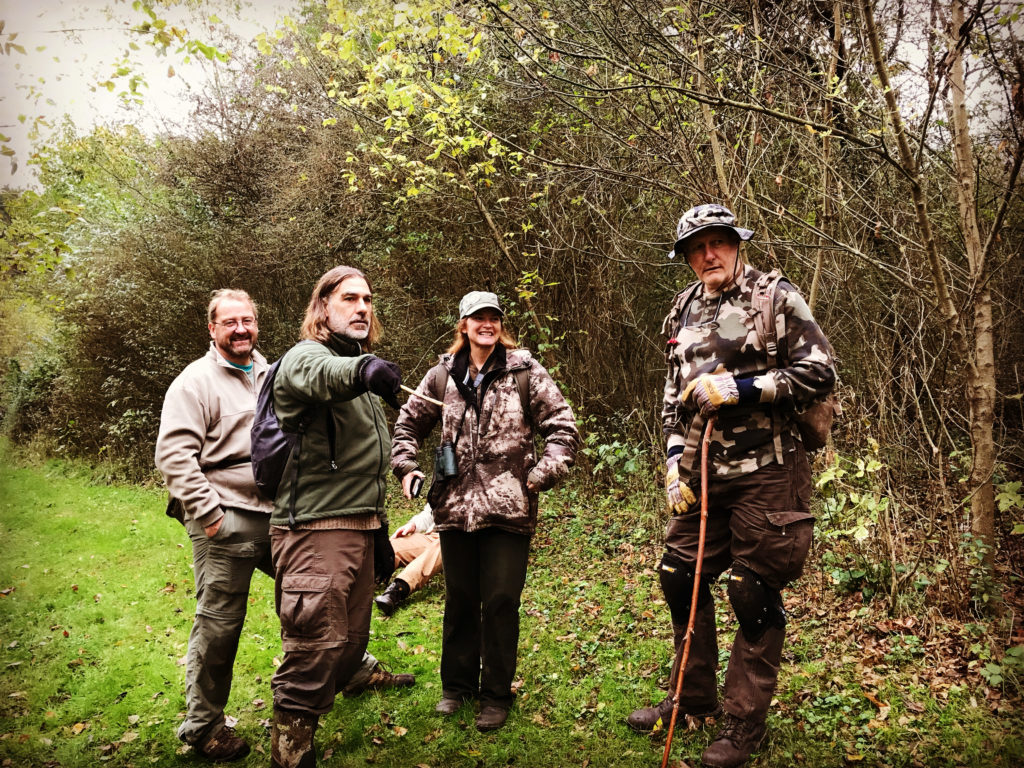
Ohio trailing participants 
Vinnie Petrie, Bill Kass, Kersey Lawrence, David Friend, and Cal Reed
In West Virginia, almost every day we walked out of the cabin and were greeted by fresh buck scrapes – areas where the males urinate and paw the ground to mix their scent into the soil, and use their antlers to bring down overhead branches, marking them with the scent glands on their head and face. One strikingly memorable moment included a large deer bed we came across while working trails along a bench (a somewhat flat area alongside a larger hill or mountain that forms a natural travel corridor or refuge). It had started to rain a little while before, and the bed wasn’t completely wet yet, meaning its resident had probably heard us coming and exited quietly before we could see him. The view from his bed was incredible! He could see more than 180 degrees in front and to the sides, down over the lower part of the hill into the streambed in the valley below, and up the side of the adjacent hill. With the wind at his back, he could have seen or smelled us coming from three counties away! The rain was warm and we took turns squatting down to see what he would have seen in the colorful oak and beech forest, then we proceeded to follow his fresh tracks as the rain continued to wash them away before our eyes.
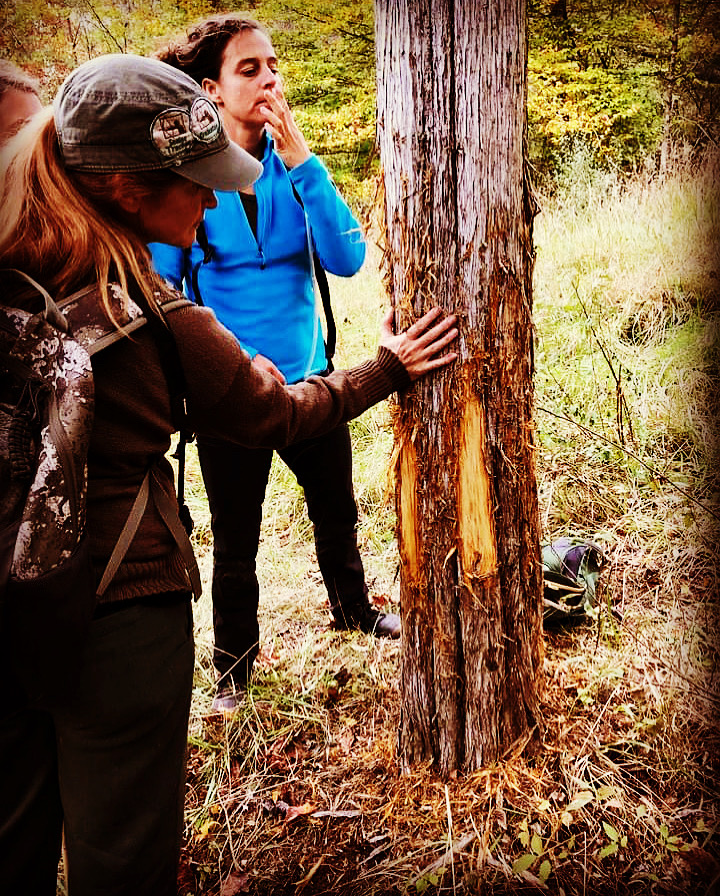
Kersey Lawrence examines a buck rub 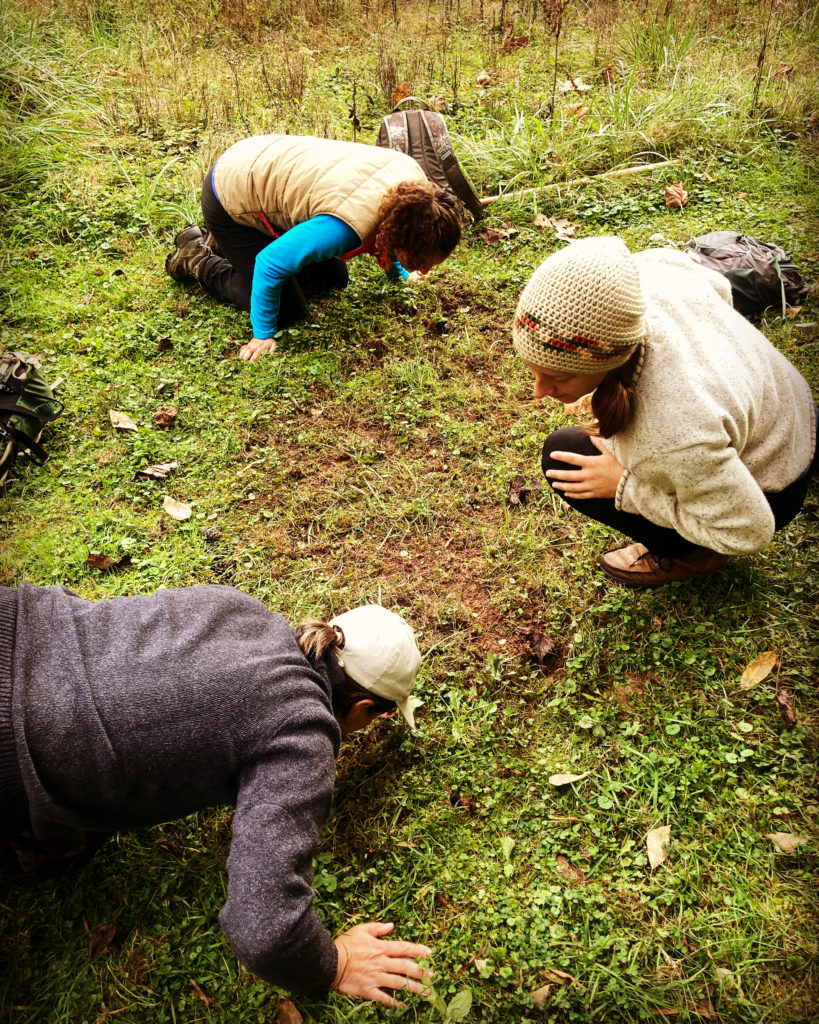
Sniffing buck scrapes 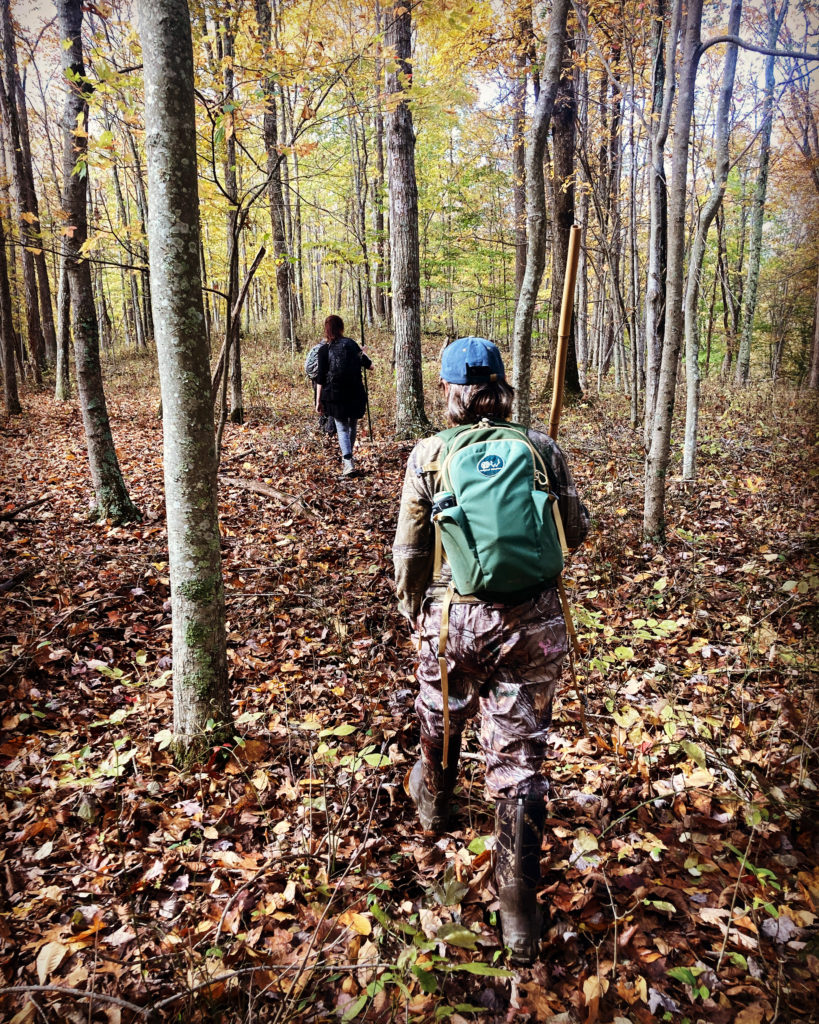
Shane Hawkins on point in WV
In Wisconsin, seeing those elk was certainly a highlight, but we also trailed wolves hunting deer, coyotes hunting deer that crisscrossed over fisher trails in an area actively being managed as marten habitat, black bear, and of course white-tailed deer. On the final day of the evaluation, when the snow cover was only dotting the landscape occasionally between bare soil and leaf litter, Kirsten Welge, of the Minnesota Tracking Project and Natural Awareness LLC, and Abi Fergus, the Wildlife Specialist for the Mashkiiziibii Natural Resources Department of the Bad River Tribe, followed a single doe through a tamarack bog on a very complex trail, resulting in their Level 3 certifications in Trailing and Tracking by the end of the day. Kirsten and Abi both worked different parts of the same trail, individually flowing along on them like water across the landscape. The scenery was stunning – Labrador tea and sphagnum moss covering the ground, alder, spruce and tamarack surrounding us in dense thickets. We accidentally surprised the doe in her warm bed, so waited a while before continuing the trail to let her settle back down after she’d bounded away, then we followed again. After another length of time, we noticed evasive behaviors in her trail and decided not to push her further into a cattail swamp that would deplete her necessary winter energy reserves.

Abi Fergus lays down in a warm deer bed 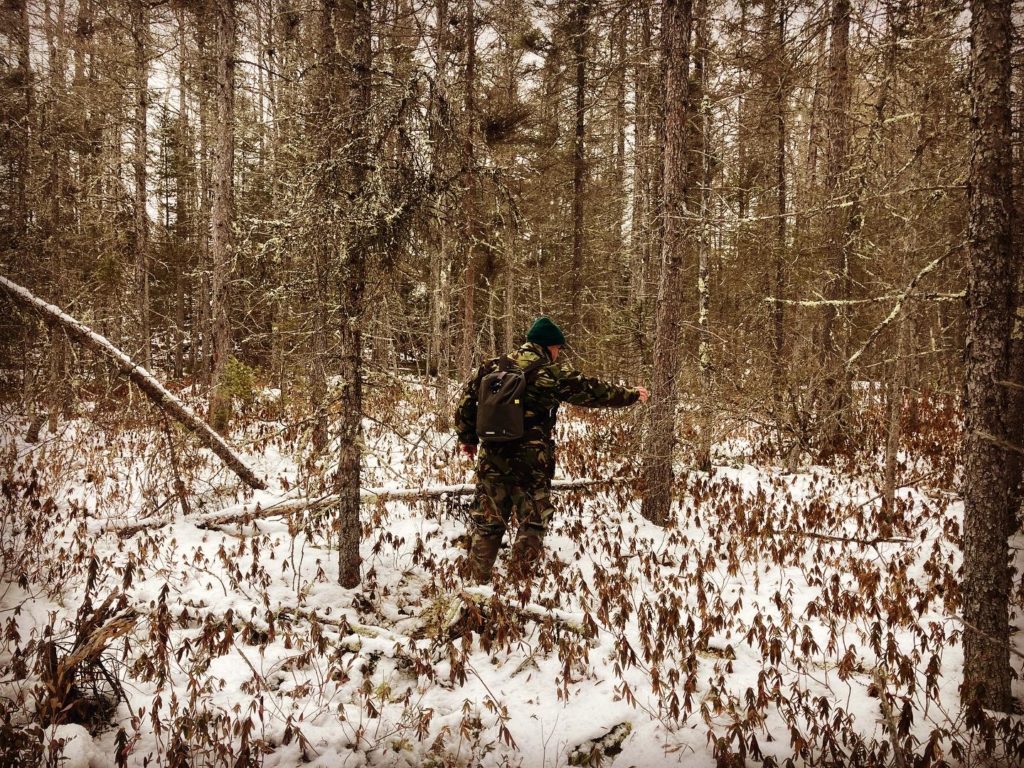
Donnie Phyillaier in Wisconsin
Everyone was able to follow trails of simple complexity, and many were able to follow as the trails pushed into a medium degree of complexity. Abi and Kirsten were able to follow even more complex trails, making them the first Level 3 Trackers in Wisconsin and Minnesota, respectively! Results for these 12 folks included three level 1’s and one level 2 in Ohio for the gentlemen, and also three level 1’s and one level 2 in West Virginia for the ladies. The Wisconsin events were a half-and-half mix of women and men, which resulted in one level 1, one level 2, and the two level 3’s described above for Kirsten and Abi. Combined with their previous Track & Sign level 3 certifications, this results in a full Tracker level 3 certification on the CyberTracker system for Kirsten and Abi! This was a spectacular learning experience for everyone on some tough trails in clay soils, falling leaves and soggy conditions. As one astute participant said, “It has been motivating. I see the world differently now.”
Thanks to Sandy and Cal Reed of Original Wisdom, who hosted the Ohio and West Virginia events, and Kirsten Welge of the Minnesota Wildlife Tracking Project, who hosted the events in Wisconsin.
We will be doing these again next year, spring and fall, so check the TCNA calendar for updates!
Gratitude to all the participants, hosts, and to the deer, who are always the best teachers.
Dr. Kersey Lawrence, Senior Tracker & Evaluator

Kristen Welge finds a warm deer bed in a tamarack bog 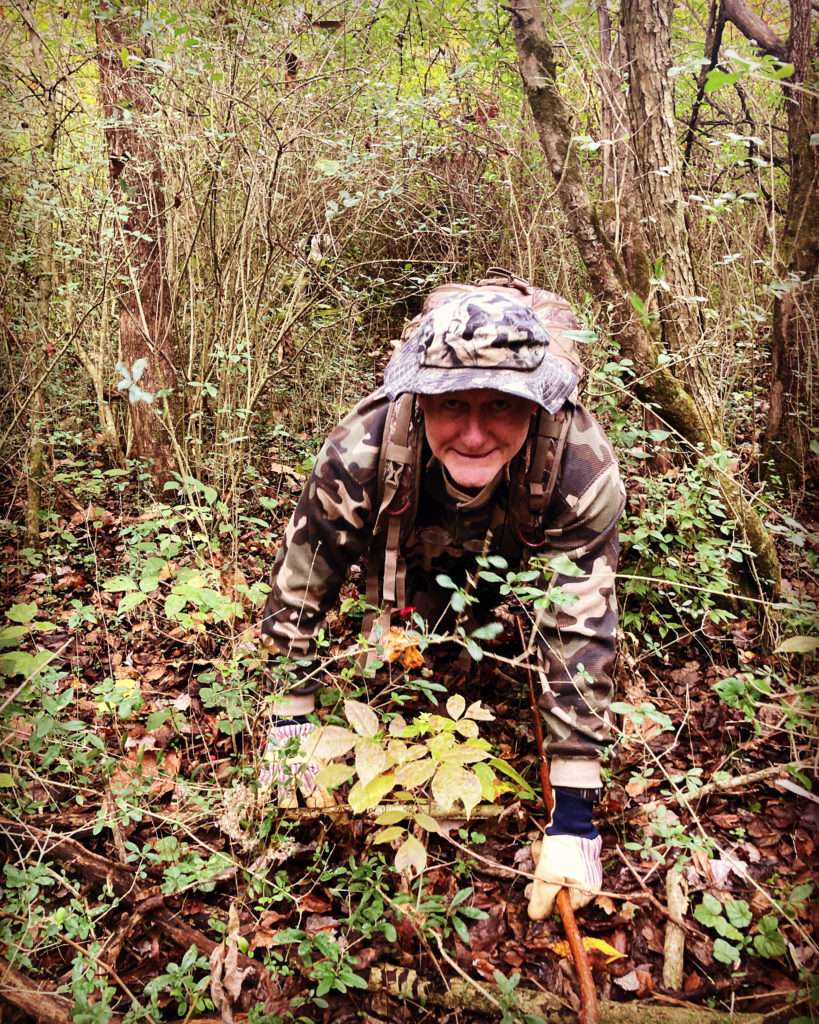
Cal Reed crawls through deer trails in Ohio

